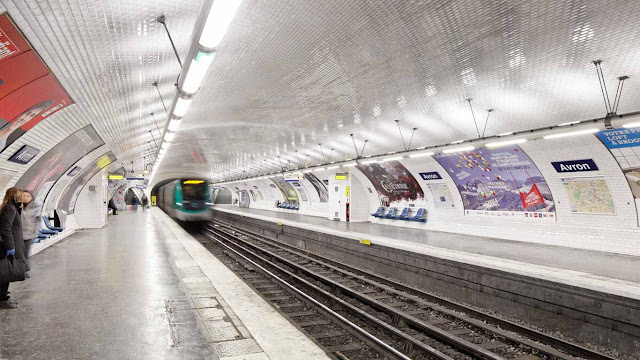TAG | station lighting

Continued testing on LiFi capabilities are in train prior to a long-anticipated roll-out of the system in Paris Metro stations.
A French firm has won the contract to supply internet-over-lighting technology on the Paris Metro.
The ambitious project – which will allow over two million daily commuters to use lights as a form of Wi-fi, dubbed ‘Li-fi’ – now looks firmly on track. Already La Defense station has been successfully equipped with the tech.
Paris-based Oledcomm, a spin-off of the University of Versailles, won the contract from RAPT to initially supply Li-fi installations in 66 stations across Paris, involving over 250,000 LED luminaires.
The award of the contract by RATP follows an extensive series of test phases before the roll-out goes ahead. The first phase of the work involved a series of evaluations to prove the concept. This work was done in a so-called Fab Lab environment, community-based workshops where entrepreneurs, students, small businesses come together to develop technology.
The system needed to demonstrate that it could deliver on its core promises of a Li-fi installation, especially on four key criteria:
- The Li-fi can operate within a complex physical environment
- The system can provide the bi-directional communications needed for a secure internet connection
- Traffic and security information can be ‘pushed’ to smart phones as necessary
- A system of audio-messaging could be developed to enable tourists and people with impaired sight to be guided around the tunnels and concourses of an underground station
The Fab Lab process also presented commercial opportunities to other entrepreneurial groups to use the open-source nature of the system to develop apps that could work alongside the core Li-fi service.
Having successfully completed the test-house phase, the next phase of the contract moved into the real world with an installation of Li-fi-enabled LED luminaires at the Metro station at La Defense.
Chosen for its complexity, La Defense provides all of the real-life difficulties that a Li-fi installation will need to overcome if it’s to prove its worth to the transport system operators.
Once all of the testing has been successfully completed and RATP is confident of the platform, it’s expected that Paris will become the first public transportation system in world with Li-fi connectivity.
Oledcomm, formed in in 2005, installed its first public Li-fi project at the Musee Curtius in Liege in 2012. Since then, the company has gone on to install systems in offices, hospitals, retail stores as well as public street lighting.
Li-fi works by making invisible modulations to the light from a luminaire – invisible to the human eye, but not to the camera on a smartphone, tablet or laptop. The same technology lies behind the positioning systems being used by retailers such as Carrefour and Target, but here it is being used to send data, rather than just to pinpoint someone’s position. Proponents of Li-fi say that it will add enormous capacity to wireless communications, because the visible light spectrum is 10,000 times larger than the radio frequency spectrum that Wi-fi uses. Some also note that it will operate much faster than Wi-fi, and that it will be useful in electromagnetic sensitive areas like hospital, airplanes and nuclear power plants.
It’s currently not clear how devices will communicate back to the lighting on the Paris Metro installation. However, it is relatively straightforward to use different wavelengths for each link direction, i.e., visible light in the downlink (to also serve as illumination) and infrared or even standard Wi-fi in the uplink.
On the downside, Li-Fi signals do not travel as far as Wi-Fi signals do.
led light communications · led lighting · led subway · li-fi · lifi · metro lighting · Novel Energy Lighting · railway lighting · station lifi · station lighting

